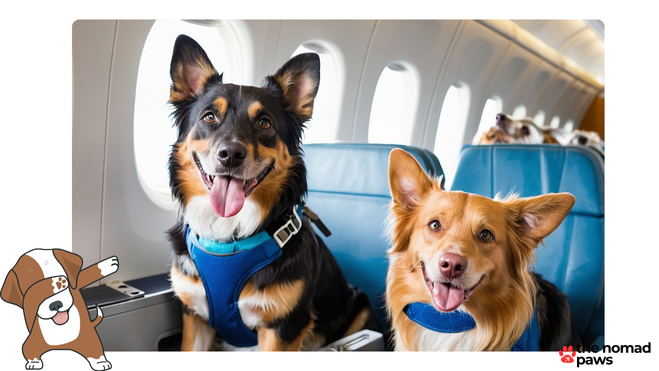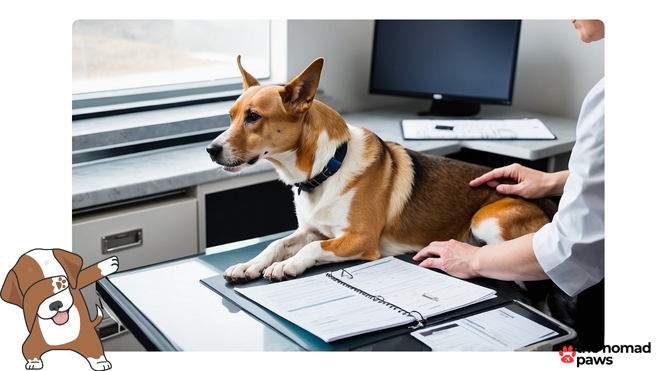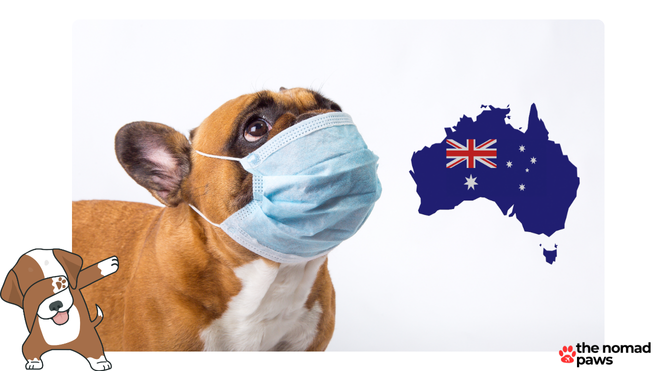Let’s face it: the thought of leaving your furry friend in quarantine can be more stressful than forgetting to pack your favorite swimsuit for a beach vacation.
If you’re planning to move to Australia with your pet or just visiting for an extended period, you’ve probably heard about the country’s strict quarantine laws to bring your dog to Australia from the United States.
But don’t worry, mate! While it’s not possible to completely sidestep quarantine, there are ways to minimize the time your pet spends in isolation.
To understand how to make this happen, we need to dive right into the nitty-gritty of navigating Australia’s pet import regulations.
Understanding Australia’s Biosecurity Laws

Australia takes its biosecurity seriously – and for good reason.
The land down under is home to unique flora and fauna that need protection from foreign diseases and pests.
That’s why the country has implemented strict quarantine laws for incoming pets.
Did you know?
Australia’s quarantine laws are so strict that even Johnny Depp’s dogs, Pistol and Boo, weren’t exempt from the rules.
The actor faced legal trouble when he failed to declare his Yorkshire terriers upon entry in 2015.
The Quarantine Period: What to Expect
The standard quarantine period for pets entering Australia varies depending on the country of origin:
- Pets from Group 2 countries (e.g., Singapore and Japan): 10 days
- Pets from Group 3 countries (e.g., US and UK): 10 or 30 days
Here’s the good news: Pets arriving from New Zealand and the Australian territories of Norfolk Island and Cocos (Keeling) Islands are exempt from quarantine. Lucky them!
Minimizing Quarantine Time: Your Action Plan

While you can’t completely avoid quarantine, you can take steps to ensure your pet spends the minimum required time in isolation. Here’s how:
1. Check Your Pet’s Eligibility
Before you start planning, make sure your pet is eligible to enter Australia. Some restrictions apply:
- Certain breeds of cats and dogs are not allowed
- Pregnant or nursing animals are restricted
2. Microchip Your Pet
Your pet must have a microchip with 15 digits that’s readable by an ISO-compatible reader. This is crucial for identification purposes.
3. Vaccinate, Vaccinate, Vaccinate
Ensure your pet has all required vaccinations, including:
- Rabies vaccine
- Other core vaccines specific to dogs or cats
Pro tip: Keep detailed records of all vaccinations, including dates and batch numbers.
4. Get a Rabies Neutralizing Antibody Titre (RNAT) Test
This test confirms that your pet has developed sufficient antibodies against rabies.
The RNAT test must be performed at least 180 days before your planned arrival in Australia.
5. Apply for an Import Permit
You’ll need to apply for an import permit for your pet.
This process includes providing documentation of your pet’s vaccinations and health checks.
6. Schedule Pre-Export Veterinary Checks
In the lead-up to your departure, your pet will need to undergo several veterinary checks to ensure they’re healthy and free from parasites.
7. Choose Your Arrival Date Wisely
Try to time your arrival in Australia to coincide with the end of your pet’s required quarantine period.
This can help minimize the time your pet spends in isolation.
The Quarantine Experience: What to Expect

While the thought of quarantine might be unsettling, many pet owners report a smooth experience with the process.
Here’s what you can expect:
- Your pet will be housed at the Mickleham post-entry quarantine facility in Melbourne
- Staff at the facility prioritize animal health and well-being
- You’ll receive regular updates on your pet’s health and behavior
Note: Unfortunately, you won’t be able to visit your pet during the quarantine period. But don’t worry – they’ll be in good hands!
Special Considerations: Assistance Animals
If you have an assistance animal, there’s some good news.
These animals may be able to quarantine at home instead of at the Mickleham facility.
However, specific requirements and approvals are needed, so be sure to check with the Australian authorities well in advance.
Planning Ahead: The Key to a Smooth Process
The key to minimizing quarantine time (and stress) is planning ahead. Here’s a timeline to help you stay on track:
- 12-18 months before travel: Start researching and planning
- 6-12 months before travel: Begin vaccination process and schedule RNAT test
- 3-6 months before travel: Apply for import permit
- 1-3 months before travel: Schedule pre-export veterinary checks
- 2-4 weeks before travel: Finalize travel arrangements and documentation
Common Pitfalls to Avoid

To ensure your pet’s journey to Australia goes as smoothly as possible, watch out for these common mistakes:
- Overlooking documentation: Ensure all paperwork is complete and accurate. A single missing document can lead to delays.
- Ignoring timing requirements: Pay close attention to the timing of vaccinations, tests, and health checks. They must be done within specific timeframes.
- Forgetting about climate differences: If you’re moving from a cold climate to Australia’s heat, consider acclimatizing your pet gradually.
- Neglecting your pet’s mental health: Prepare your pet for travel by getting them used to their travel crate well in advance. Also, don’t forget that flying can hurt dog ears – so you may want to take some precautions, especially if your pet gets anxious while flying.
- Assuming all pets are eligible: Double-check that your pet’s breed is allowed in Australia before making any plans.
The Silver Lining: It’s Worth It!
While the process of importing your pet to Australia may seem daunting, remember that these strict measures are in place to protect not only Australia’s unique ecosystem but also the health of your beloved pet.
Fun fact: Australia is home to some of the world’s most unique animals, including the kangaroo, koala, and platypus.
The quarantine laws help ensure these creatures remain protected from foreign diseases.
Your Pet’s Australian Adventure Awaits

While it’s not possible to completely avoid pet quarantine in Australia, with careful planning and preparation, you can minimize the time your furry friend spends in isolation.
Remember, the process might seem overwhelming, but thousands of pets successfully make the journey to Australia each year.
By following the steps outlined in this guide, you’ll be well on your way to ensuring a smooth transition for your pet to their new Aussie home.
Before you know it, you’ll be exploring the beautiful Australian landscapes together, from the stunning beaches to the rugged Outback.
So, pack your bags (and remember your pet’s travel essentials), get an IATA-compliant dog travel crate, and get ready for an unforgettable adventure down under.
Just remember to leave the vegemite at home – your pet probably won’t appreciate it as much as the locals do!





